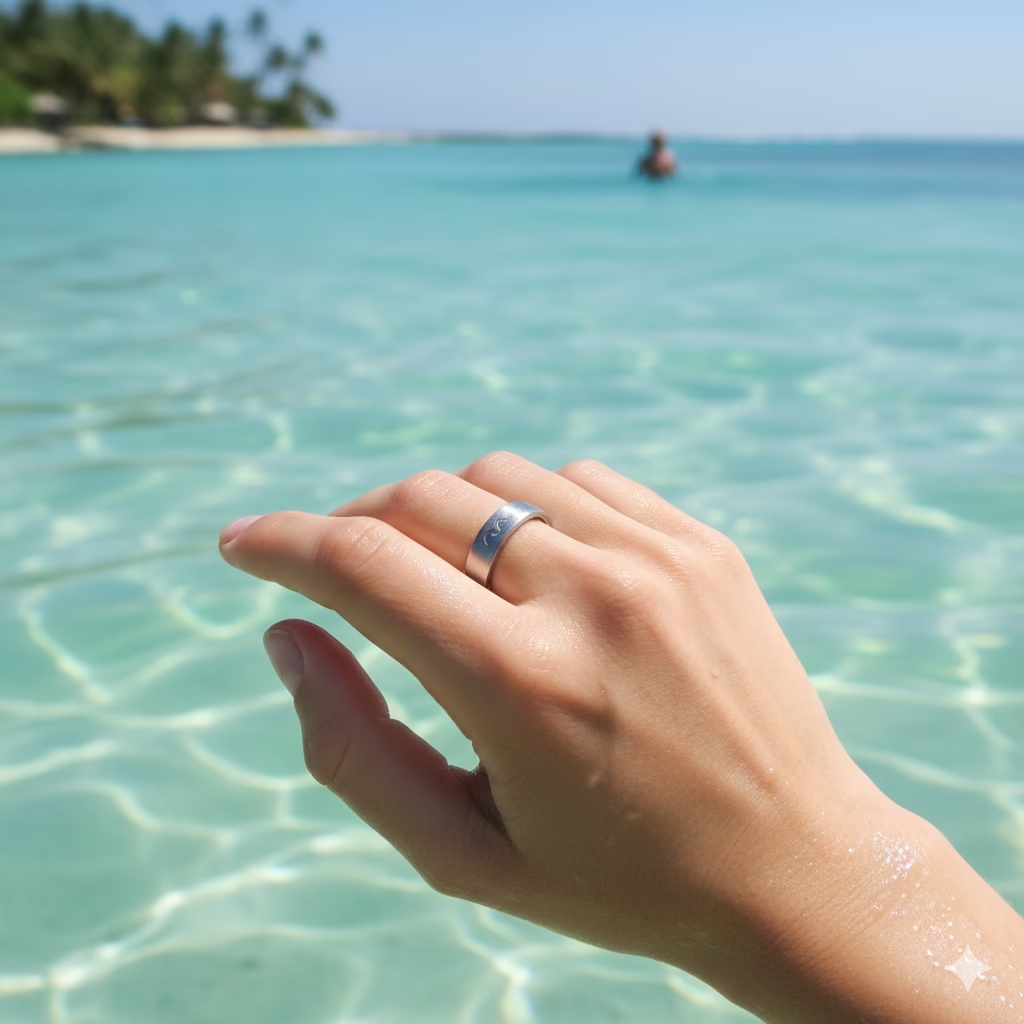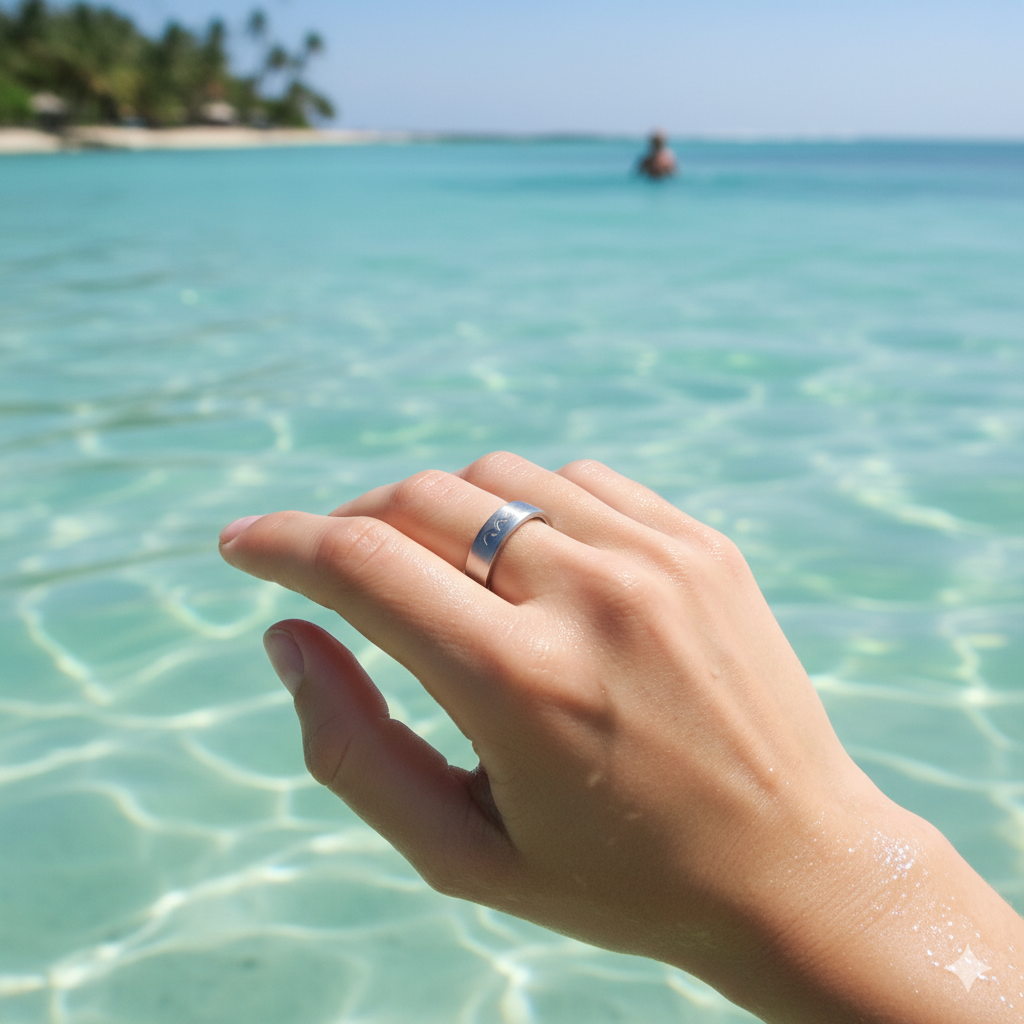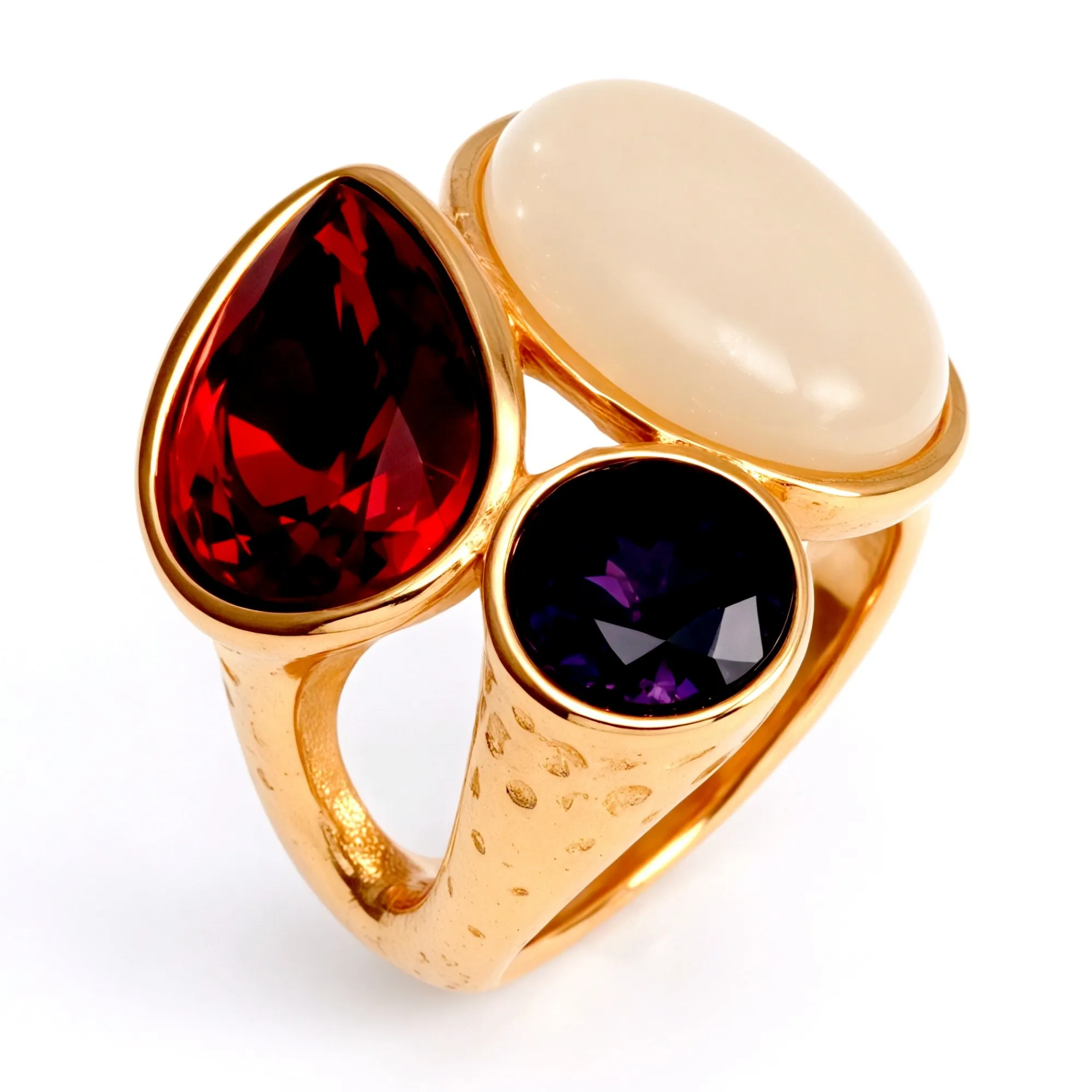Blog
Can You Wear a Stainless Steel Ring in the Shower and Pool?


What Is Stainless Steel Understanding the Material
Stainless steel is a metal alloy mainly made of iron, carbon, and chromium. The key to its waterproof qualities lies in its composition. Chromium, which makes up at least 10.5% of the alloy, forms a thin, invisible layer on the surface called the chromium oxide layer. This layer protects the metal underneath from water, air, and moisture that cause rust and corrosion.
Composition and Properties Relevant to Waterproofing
- Iron – Base metal providing strength
- Carbon – Adds hardness and durability
- Chromium – Creates corrosion-resistant surface
- Nickel (in some grades) – Enhances shine and toughness
- Molybdenum (in higher grades) – Improves resistance to harsh environments
This unique mix makes stainless steel tough, corrosion-resistant, and ideal for jewelry that faces frequent exposure to water.
Different Grades of Stainless Steel Used in Jewelry
Jewelry-grade stainless steel varies by composition and quality. The most popular is 316L stainless steel, known as surgical or marine grade. It offers more molybdenum, which boosts corrosion resistance, especially against saltwater and chlorinated water, compared to 304 or 316 grades.
| Grade | Chromium % | Nickel % | Molybdenum % | Water Resistance | Typical Use |
|---|---|---|---|---|---|
| 304 | 18-20 | 8-10 | 0 | Good water resistance | General jewelry |
| 316 | 16-18 | 10-14 | 2-3 | Better against corrosion | Higher-end pieces |
| 316L | 16-18 | 10-14 | 2-3 | Best corrosion resistance | Premium jewelry |
Corrosion Resistance and Toughness
Stainless steel’s corrosion resistance means it doesn’t rust or tarnish easily. Unlike silver or ordinary steel, it stands up to sweat, rain, and household chemicals without degrading. It’s also tough and scratch-resistant, making it ideal for everyday wear and water activities like swimming and showering.
In , stainless steel’s unique makeup gives it the strength and protective features needed for waterproof rings that last. Its variety of grades lets you choose the right balance of durability and beauty.
Are Stainless Steel Rings Waterproof
When talking about jewelry, waterproof means the item can be fully submerged in water without any damage, while water resistant means it can handle some exposure to water but not all conditions. Stainless steel rings are highly water resistant, but they aren’t 100 percent waterproof. This means they can handle daily water exposure but aren’t completely immune to all effects of water over time.
Thanks to their non-corrosive nature, stainless steel rings usually don’t rust or tarnish like other metals such as silver or copper. When they get wet—whether you’re swimming, showering, or just washing your hands—they typically stay in great condition. Unlike softer metals, stainless steel holds up well because it resists water damage and doesn’t degrade easily.
Benefits of Waterproof Stainless Steel Rings
Stainless steel rings that are waterproof offer several key benefits, especially if you lead an active lifestyle or spend a lot of time around water.
Durability and Long Lifespan
- Stainless steel handles exposure to water without rusting or losing strength.
- Perfect for swimming, showering, and everyday wear without worrying about damage.
Hypoallergenic and Tarnish Resistant
- Stainless steel is gentle on skin, making it a great option for people with sensitivities.
- Unlike silver or cheaper metals, it won’t tarnish or discolor when exposed to sweat or water.
Cost Effectiveness Compared to Precious Metals
- Offers the look and feel of high-end jewelry without the high price tag.
- You get quality and style that lasts without needing costly replacements or repairs.
Low Maintenance for Daily Wear
- Requires minimal upkeep—just clean with mild soap and water occasionally.
- No need for polishing kits or special storage to keep it looking brand new.
| Benefit | What It Means for You |
|---|---|
| Durability | Rings won’t rust or wear out easily |
| Hypoallergenic | Safe for sensitive skin |
| Tarnish Resistant | Maintains shine and color over time |
| Cost Effective | Affordable alternative to gold/silver |
| Low Maintenance | Easy care, perfect for daily use |
These features make waterproof stainless steel rings a smart choice for anyone looking for stylish, functional rings that can stand up to water and everyday life.
How to Care for Your Stainless Steel Ring to Maintain Its Water Resistance

Taking care of your stainless steel ring is easy but important to keep its water resistance in top shape. Here’s what you should do:
Cleaning after water exposure
- Rinse your ring with clean water after swimming in chlorinated pools or salty ocean water to prevent buildup.
- Use mild soap and warm water to wash off dirt or soap residue after daily wear or showering.
- Gently scrub with a soft-bristled toothbrush if needed to remove stubborn grime.
Avoid chemicals and harsh abrasives
- Stay away from bleach, strong detergents, or abrasive cleaners that could dull or damage the ring’s finish.
- Avoid using steel wool or rough cloths that can scratch the surface.
Proper storage and handling
- Store your ring in a dry, cool place, ideally inside a jewelry box or pouch to avoid scratches and exposure to moisture.
- Take off your ring before using harsh cleaning products or doing heavy manual work to preserve its waterproof qualities and shine.
Following these simple steps will help your stainless steel ring stay beautiful and water resistant for years to come.
Stainless Steel Rings vs Other Metals Water Resistance Comparison
When it comes to water exposure, different metals react in various ways. Here’s a quick comparison of stainless steel rings against gold, silver, titanium, and tungsten:
| Metal | Water Resistance | Pros | Cons |
|---|---|---|---|
| Stainless Steel | Highly water resistant | Tarnish resistant, durable, hypoallergenic | Not 100% waterproof, can dull over time |
| Gold | Moderately water resistant | Classic look, won’t rust | Can scratch easily, may tarnish with chemicals |
| Silver | Low water resistance | Affordable, elegant | Tarnishes quickly, prone to corrosion |
| Titanium | Excellent water resistance | Lightweight, strong, hypoallergenic | Limited at-home polishing, can scratch |
| Tungsten | Very high water resistance | Extremely durable, scratch resistant | Brittle, can crack under hard impact |
Key points:
- Stainless steel is tough, holds up well with daily water exposure like showering and hand-washing.
- Gold and silver need more care; water, especially chlorinated or salty, can dull or tarnish them faster.
- Titanium and tungsten are great for water activities but differ in care and toughness; titanium is lighter, tungsten is harder but brittle.
- For affordable and low-maintenance water-resistant rings, stainless steel stands out.
Top Waterproof Stainless Steel Rings by JINBAOJEWELRY
JINBAOJEWELRY offers a great selection of stainless steel rings designed to handle everyday water exposure without losing their shine or strength. These rings stand out for their excellent water resistance, durability, and modern styles that fit any look—from casual to formal.
Their 316L stainless steel rings are particularly popular because they resist rust and tarnish even after swimming, showering, or washing hands. You’ll find options with sleek finishes, bold accents, and lightweight comfort. Many customers praise these rings for lasting years without discoloration or wear.
Here’s what shoppers say:
- “My JINBAOJEWELRY ring stayed flawless after months of pool time.”
- “Great quality ring that feels solid but looks stylish daily.”
- “I love how it stays hypoallergenic even with constant water contact.”
FAQs About Stainless Steel Rings and Water Exposure
How long can I wear a stainless steel ring in water?
You can wear stainless steel rings in water for extended periods without worry. They handle everyday water exposure like showering, washing hands, or swimming quite well due to their water resistance. Just avoid prolonged contact with harsh chemicals or extremely salty water to keep them looking their best.
Will water damage my stainless steel ring finish?
Water alone won’t damage the finish of a stainless steel ring. These rings are known for their tarnish resistance and durability. However, exposure to chlorinated water or saltwater over time can dull the shine if not rinsed off and cleaned properly afterward.
Can stainless steel rings cause skin reactions when wet?
Stainless steel rings, especially hypoallergenic grades like 316L, rarely cause skin reactions—even when wet. They’re a great choice if you have sensitive skin or allergies to other metals. Just make sure to keep the ring clean to avoid any irritation from trapped dirt or soap.
How do I remove stubborn stains or discoloration?
For tough stains or discoloration on your stainless steel ring:
- Use warm soapy water and a soft cloth to gently clean the surface.
- For deeper cleaning, a paste made from baking soda and water works well. Apply it with a soft brush, then rinse thoroughly.
- Avoid harsh chemicals and abrasive materials that can scratch or damage the finish.
- Dry the ring completely after cleaning to prevent water spots.
Keeping these simple tips in mind will help your stainless steel ring stay looking sharp and water-resistant day after day.
